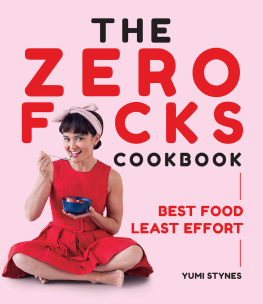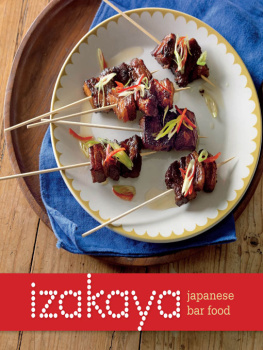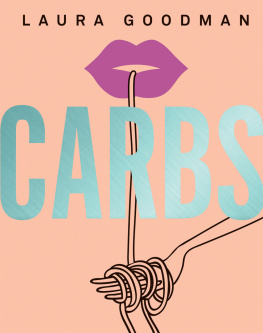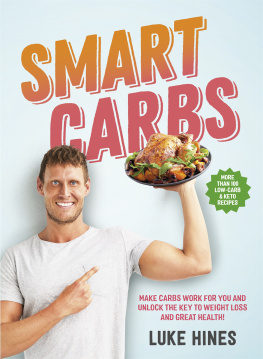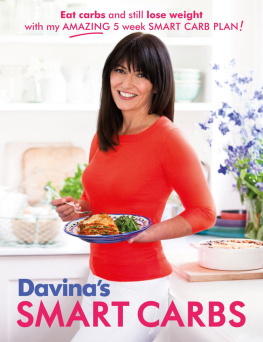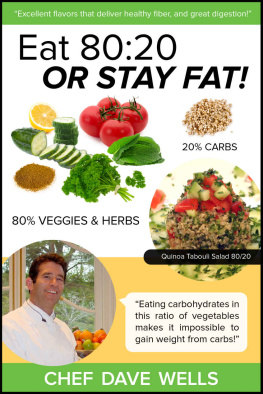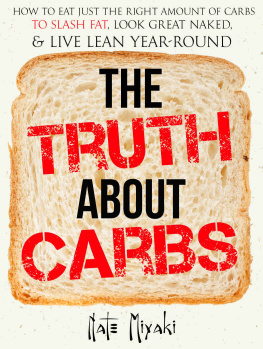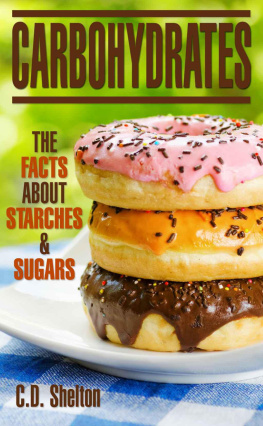
FOR ANDREW AND WILL,
AKA THE HUNGRY ONES,
BIG AND SMALL.
CONTENTS

I know what its like to use carbs as a culinary crutch. Until I was a teenager I would only eat things that were white. Rice, bread, potatoes, but most of all noodles. A little lick of butter, cheese, or plain chicken was all the flavor I needed.
It wasnt until I was twenty-one and scoffing white rice and a small slick of curry in Malacca, Malaysia, that the tables really turned. The water I was sipping came from the local well. The meal was accompanied by a side order of E. coli. Soon after that, I got glandular fever. Then came five years of a spluttering immune system and exhaustion which felt like weights were attached to my legs and my brain was swaddled by marshmallow.
Suddenly, the foods I had turned to for comfort provided anything but. Not only did they not give me lasting energy, but they encouraged a sugar spike in my body which made me feel even worse.
And so I was lost. I had been conditioned to use white carbohydrates as the base of every meal I cooked. I assumed that because they sat at the bottom of the food pyramid I grew up with, that they were best for me. So Monday nights were quick stir-fries (with rice). Sometimes there were curries (with naan). The rest of the week: pizza, pasta, risotto, sushi. There was takeout Thai with my beloved Pad See Ew. Toasted sandwiches, plucked off the panini press. Baked potatoes with ground meat. Gnocchi with pesto. Sourdough toast with avocado and lemon juice for emergency late-night snacks. These were all quick, safe, and relatively cheap. Those white carbohydrates were the blank canvas on top of which I dabbled with other flavors.
As it turns out, the white carbohydrates that I had grown to love were foods which are broken down quickly in our bodies, swiftly transforming into glucose. Some of them left me feeling bloated. Some drove me to rabid hunger only a few hours after Id eaten. And most would deliver a sharp jolt of energy, before leaving me more lethargic than I was to begin with.
The only way out I could find was to get creative in the kitchen. I needed to find some food that was smarter. And I needed to be a little cannier about how I cooked.
SO WHATS THE ANSWER?
I knew from the beginning that a strict no-carb doctrine was not for me. Im not interested in brutal regimes; I love food too much. I take too much pleasure from gathering people around a table brimming with wine and conversation for an absolutist approach. I needed a moderate, middle path. But I was also starting to acknowledge the slightly uncomfortable truth A. A. Gill once expounded, that the easiest way to lose weight fast is to cut out carbs. Not all of them, but the big four: bread, potatoes, pasta, rice.
I had to stop relying on the big four as my everyday, every-meal foods. Because losing a little bit of weight wasnt the only thing I could do with. The honest truth is that white carbohydrates were doing me no favors in lots of areas of my health. And the reason for that has to do with their glycemic index.
What is the glycemic index (GI)?
Its a way of ranking carbohydrates on a scale of 0100 based on the impact they have on your blood sugar after you eat them. Foods scored with a high GI are digested swiftly and spike your blood sugar. Foods with a low GI are absorbed and digested more slowly, which has a more moderate, sustained effect on blood sugar, helping to keep you fuller for longer.
And which foods have some of the highest GIs of all? The big four: white bread, white rice, potatoes, and white pasta.
What are smart carbs?
Carbohydrates help give us fuel. They have a significant role to play in our diets; even the most famous no-carb doctrines incorporate carbohydrates again at some point. But a smart carbohydrate is one which will work harder for you. Rather than eating a downy cloud of simple sugars, smart carbohydrates come packed with fiber, essential nutrients, and amino acids.
What is the choice?
The choice between filling up on smart carbs or simple white ones is akin to packing a suitcase for a trip. On one hand, youve got the option of taking with you a variety of clothes, three pairs of shoes, and your toiletries. On the other you could just cram a white fluffy duvet into your bag. Sure the duvet will cover you for a brief period, but its usefulness will soon wear out.
NEW FOODS, NEW OPTIONS, NEW LIFE
I know better than anyone that the comfort of white carbs can be difficult to leave behind. For one, we associate them with filling us up, at least in the short term. For me, one of the hardest things was finding new meals that would also satisfy my 63 husband. Ive referred to him for years as The Hungry One. And while its a name that applies to his appetite for life as much as his ability to consume, most who know him will agree: the man can eat. Straight soups and salads with broiled protein just werent going to cut it. Slow-burning carbohydrates that could provide proper substance needed to take center stage. That was one way to prevent him churning through dinner and then at the end gently asking what was for main course.
Since then, Ive fallen for protein-rich grains and seeds like quinoa, chia, and ground flaxseed. Ive become a little evangelical about beans, replacing the staple side of mashed potatoes and rice with white bean pure, and convinced others that not only is it quicker, but often tastier too. I found that chickpea flour has a nutty flavor that works particularly well in savory dishes. And when it comes to desserts, instead of my default desserts of bread pudding, tarts, and pies, I learned to love baking with ground nuts and use fruits as a base.
Once I started cooking this way, I quickly learned that a change really can be as good as a vacation. And Im not alone. Friends and colleagues with diabetes, heart conditions, and polycystic ovaries, those who are breastfeeding and those who just want to lose a little bit of excess weight, have all benefitted from shifting away from white carbsand theyve never looked back.
Concentrating on eating smart carbs when were at home has made a world of difference to my life. Im healthier. I have more energy. My skin is better. I lost nine pounds from what I thought was my standard weight (and The Hungry One has lost thirteen). When I got pregnant with baby Will, I found it tempting to fall down a deep and dark carb hole. And I certainly had my moments: the first thing I ate after he was born was a toasted ham, cheese, and tomato sandwich, and nothing has ever tasted better. But eating slower and smarter carbs as the base of most meals not only allowed me to shed most of the pregnancy weight, but gave me the right sort of energy in the first three months of his life to balance feeding him, taking care of him, and writing and testing the recipes for this book.
These recipes take inspiration from both my travels and my life in Sydney and London. They fill us up and pack a flavor punch. Theyre celebratory, but in a low-key sort of way. This food is fresh, vibrant, and addictively good. What youll find is not really a diet at all. Its just a new way of looking at what you eat. There are some new ingredients to fall in love with and some makeovers for old friends.
Next page

